Posted In: Culture & Diversity, Strategic Planning, Uncategorized
Top Workplace Cultures see Top and Bottom Line Growth
Employees who work in constructive workplace cultures understand what is expected of them, feel empowered to do their jobs well, tend to effectively meet their objectives, and feel recognized for their contributions. The best companies to work for have constructive cultures.
It should not come as a surprise, then, that studies show that organizations with strong constructive cultures also have strong growth compared to peer organizations with less constructive cultures.
Alex Edmans, Professor of Finance at the London Business School, has published 2 papers on the correlation between stock prices and Fortune’s 100 Best Companies to Work for in America from 1984-2014. He found that the Best Companies outperformed their peers (other similar firms in the same industry or with the same characteristics but not ranked as Best Companies) by 2 to 3 percentage points per year.
To control for the chicken-egg conundrum of whether best workplaces resulted in better financial performance or whether better financial performance produced best workplaces, Edmans looked at stock returns, as opposed to company profit, “because if employee satisfaction was the result of good performance, rather than the cause of good performance, then the profits of the company would already be in the stock price today, and you should not expect higher returns going forwards. So, by looking at employee satisfaction today, and future stock returns, that tries to get around the issue of causality.”[1] Put simply: best companies to work for reap higher financial returns than their peers.
At LawVision, we wanted to test whether this correlation between best workplaces and strong financial performance also holds true for law firms. Our analysis begins with a high-level comparison of the top 25 firms ranked for firm culture on Vault’s 2019 list of Best Law Firms to Work for in America against recent performance based on 2018-2019 Am Law 200 data. We wanted to see whether firms ranked highly for their cultures are also seeing stronger rates of growth (in number of total attorneys but also Associates as well as increases in top and bottom lines) as measured by Gross Revenue, Net Operating Income, PPEP, Total Attorneys, and Leverage.
Findings?
Having a highly-ranked culture does not require having the highest gross revenues or other attributes tracked by the Am Law 200. However, as seen in the scatter plot below, many firms ranked highly by Vault for culture are distributed across the Am Law 200. Some of the highest-ranked firms on Vault’s list are in the Am Law 2nd hundred (the Vault 25 and associated Am Law 200 rankings are listed at the end of this piece). For smaller firms, the correlation between culture and financial performance may also exist (we believe it does), though the Vault 25 and Am Law 200 include only larger firms.
Firms ranked highly for culture tend to see higher growth rates in the attributes we reviewed compared to firms that are not ranked highly for culture. Of firms on the 2019 Vault 25 list that are also on the 2018 and 2019 Am Law 200 lists[2], those firms with highly-ranked cultures have higher YoY growth rates with respect to Gross Revenue, Net Operating Income, PPEP, Total Attorneys, and Leverage.
In conclusion, firms with highly-ranked cultures are, on average, increasing their pool of talent and growing top and bottom line revenue at a faster rate than their peers.
Please refer to the box and whisker plots[3] below.
We also performed an analysis of longer-term multi-year growth trends. The results are not included here because our analysis is incomplete; however, preliminary findings appear to show the same trends but over longer periods of time — that growth continues at a faster rate for firms ranked highly for culture than growth at firms not ranked highly for culture. We hope to share a more complete multi-year analysis in the near future.
If you are interested in learning more about what makes a firm’s culture constructive, how to measure whether your firm has a constructive culture, and – if needed — how to devise a plan to set your firm’s culture on a more constructive path, please reach out. My professional goal is to help firms achieve and measure positive change. My name is Yvonne Nath and I can be reached at ynath@lawvision.com.
For your reference, here is the list of top 25 firms for firm culture, according to Vault, as well as each of their Am Law 200 rankings, as applicable.
Endnotes
[1] From a 2014 interview with Yahoo! Finance.
2 Eversheds Sutherland (US) LLP and Clifford Chance are not on the Am Law 200 so they are excluded from this analysis.
3 For a quick explanation for how to interpret box and whisker plots, see Understanding and Interpreting Box Plots. Note that, for the sake of scale, not all outliers are shown on the box and whisker plots below.
https://www.wellbeingatschool.org.nz/information-sheet/understanding-and-interpreting-box-plots
Sources
ALM Intelligence (2019). “Am Law 200” https://www.lawcatalog.com/ProductDetail/17671/Am-Law-200
Edmans, Alex (2011): Does the Stock Market Fully Value Intangibles? Employee Satisfaction and Equity Prices (Journal of Financial Economics 101, 621-640) which first used the list from 1984-2009
Edmans, Alex (2012): The Link Between Job Satisfaction and Firm Value, With Implications for Corporate Social Responsibility (Academy of Management Perspectives 26, 1-19) which used the updated list from 1984-2011
Vault (2019): Best Law Firms for Firm Culture” https://www.vault.com/best-companies-to-work-for/law/best-law-firms-to-work-for/firm-culture.
Yahoo! Finance (2014): “Why Firms with Happy Employees Beat the Competition” (video) https://finance.yahoo.com/news/why-firms-with-happy-employees-beat-the-competition-184904050.html
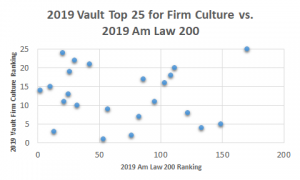
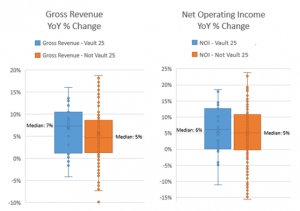
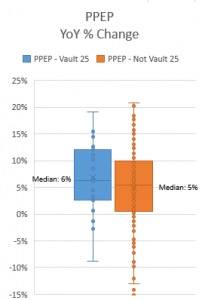
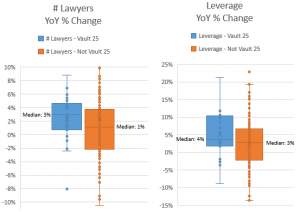
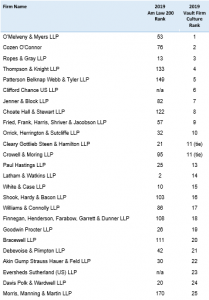
No Comments